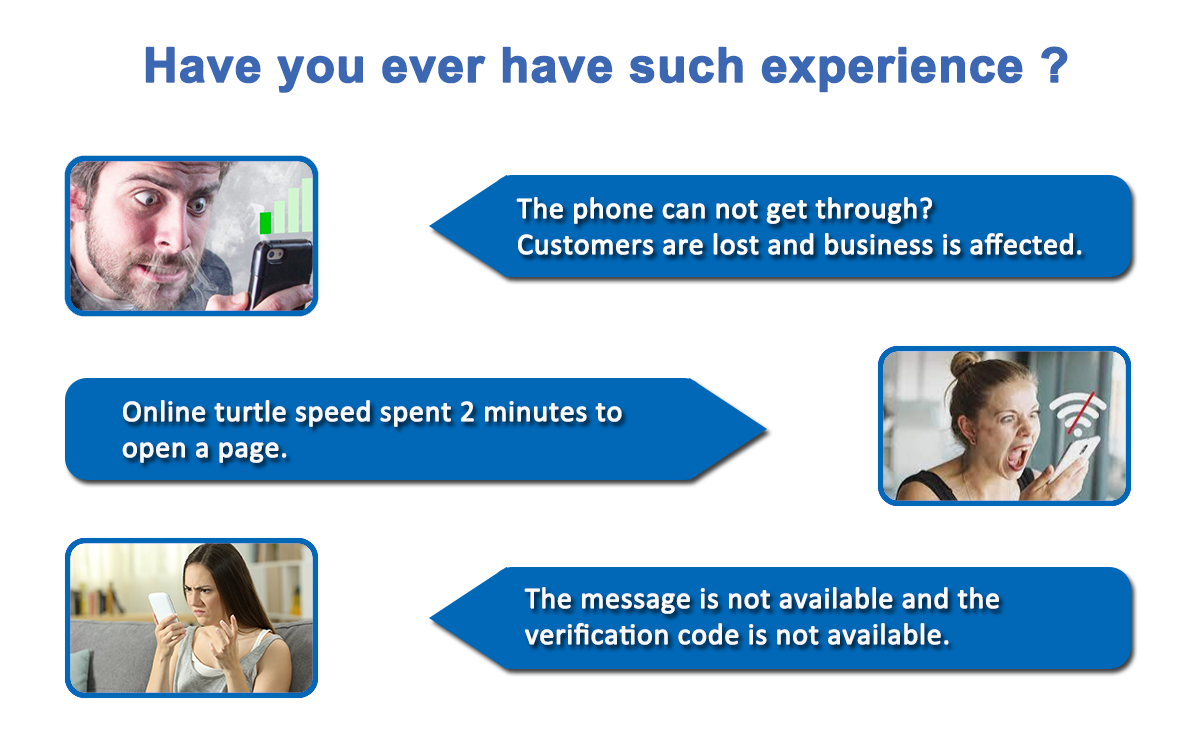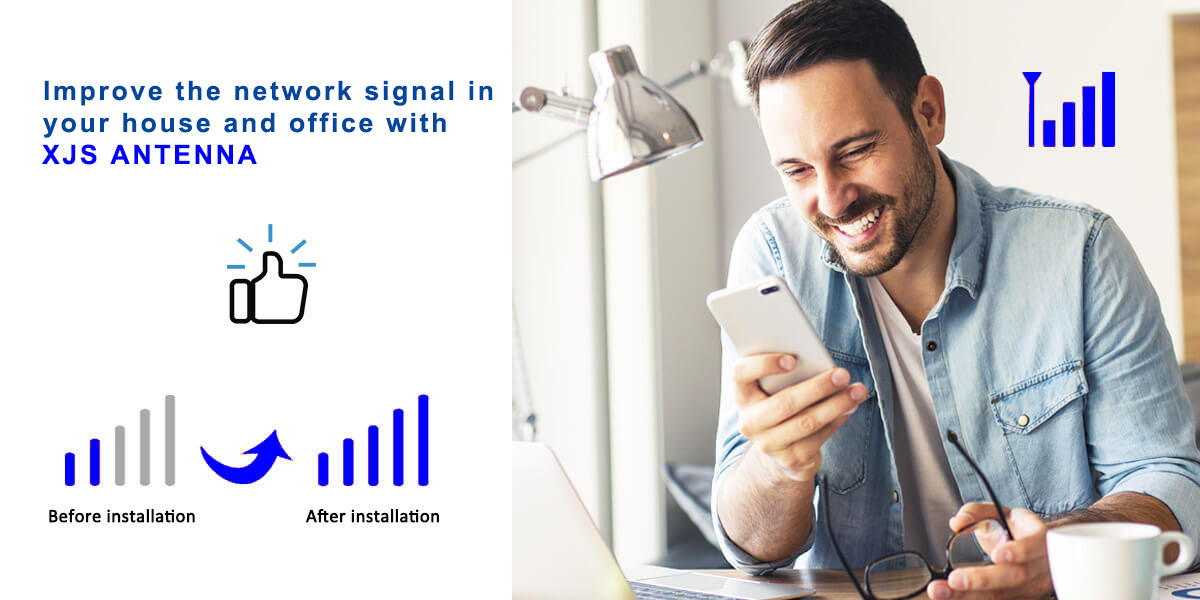Freq.: 698-2700 MHz
Gain: 11 dBi
VSWR: ≤1.7
HPBWH: 65°/60°
HPBWV: 50°/40°
Polarization: Vertical
.jpg)
Wireless Internet has revolutionized the market of the 21st century. We use it on our laptop or TV. We watch movies, listen to music, and communicate with our families. In fact, the Internet offers us endless possibilities. Although wireless internet is already widely available and ubiquitous around the world, does the signal strength in all corners of your home meet your needs? There's no denying that we're still grappling with distractions that prevent us from using the internet comfortably.
We have the perfect solution. XJS Technology's 4G LTE antenna will significantly improve the quality of data transmitted to your device.
This 698-2700MHz 11dBi Log Periodic antenna features high gain and low VSWR for distributed antenna systems (DAS) to solve building coverage problems. It can receive signals from outdoor distances, as an important part of DAS system, solve the signal reception problems of 4G LTE, 3G and 2G, and help customers solve communication problems.
This antenna uses a high quality ABS radome and RG58 coaxial cable, pure copper N-Female connector. With its consistently good quality, it has been favored by users in the United States, Canada and Europe for many years.
Furthermore, equipped with the good quality ABS radome, this 11dbi log periodic antenna is anti-wind, anti-sunshine, and anti-rain, so 11dbi log periodic antenna band is wide and stable. You don't have to worry too much about the antenna band in the hard environment.
There are three main parts in the 11dbi log periodic antennas ---- ABS radome, N-Female connector, and 30cm cable. Some accessories are customizable, including cable length, connector type and cable type. The connector is customizable to RP-SMA Male, N-Female, and N-Male.

.jpg)
.jpg)
.jpg)
.jpg)
.png)

As a 698-2700 mhz log periodic antenna, this log periodic antenna is a versatile and powerful solution that finds a wide range of applications in the realm of modern communication technologies. Here are the main applications of the 11dbi log periodic antenna:
LPWAN (Low-Power Wide-Area Network) Applications: The log periodic antenna's capability to operate within the 698-2700 MHz frequency range makes it an ideal choice for LPWAN technologies. LPWAN networks, such as LoRa (Long Range) and NB-IoT (Narrowband Internet of Things), rely on long-range communication with low power consumption. The antenna's wide frequency coverage ensures reliable and energy-efficient connectivity for IoT devices deployed over large areas, facilitating applications like smart city infrastructure, agriculture monitoring, and industrial automation.
Cellular Networks: Cellular networks, including LTE-M (Long-Term Evolution for Machines) and various 4G/5G bands, operate within the 698-2700 MHz frequency range. The log periodic antenna's ability to cover these frequencies is vital for optimizing cellular communication, ensuring efficient data transfer, and supporting applications such as mobile broadband, voice services, and video streaming.
DAS (Distributed Antenna Systems): DAS installations require antennas that can effectively distribute and amplify signals across a designated area, enhancing indoor and outdoor wireless coverage. The 698-2700 MHz log periodic antenna is an excellent choice for DAS setups, delivering improved connectivity within public spaces, office buildings, stadiums, and other high-traffic locations.
IEEE 802.11b/g WiFi Applications: In environments where WiFi connectivity is essential, such as homes, offices, and public spaces, the log periodic antenna can serve as a reliable means of improving WiFi signal strength and coverage. The antenna's compatibility with the 2.4 GHz band (802.11b/g) makes it an effective tool for enhancing wireless network performance.
Public Safety Communications: Reliable communication is crucial for public safety agencies such as police, fire departments, and emergency responders. The log periodic antenna's broad frequency coverage allows it to support various communication protocols, aiding in the establishment of robust and responsive public safety networks.
An 11dbi log-periodic antenna is a type of directional antenna designed to focus and concentrate wireless signals in a specific direction while providing a specified gain of 11 decibels isotropic (dBi).
In XJS, we offer an 11dbi log periodic antenna in various frequency ranges to meet the various applications. Then, In this TDL-0627-11 model, two of the frequency ranges are available ---- 698 - 960 MHz and 1710 - 2700 MHz.
This 11dbi log periodic antenna has a wide frequency range from 698 to 2700 MHz, so it can be applied into vairous installation conditons.
The range of a dBi (decibels isotropic) antenna in meters is not a fixed value and cannot be determined solely by the antenna's gain in dBi.
The range of an antenna depends on several factors, including:
Frequency: The range of an antenna can vary significantly depending on the frequency it operates at. In general, lower-frequency signals can travel longer distances compared to higher-frequency signals.
Transmit Power: The transmit power of the wireless device or transmitter connected to the antenna plays a crucial role in determining the range. Higher transmit power can extend the range, all else being equal.
Environmental Factors: Environmental factors such as terrain, obstacles (e.g., buildings and trees), interference, and atmospheric conditions (e.g., weather) can impact the effective range of an antenna.
Receiver Sensitivity: The sensitivity of the receiving equipment or receiver connected to the antenna is also critical. A highly sensitive receiver can detect weaker signals and extend the range of communication.
Antenna Height and Elevation: The height at which the antenna is installed above the ground or obstacles can significantly affect the range, especially in line-of-sight (LOS) communication. Taller antennas can provide better line of sight and extend the range.
Antenna Type: The type of antenna (omni-directional, directional, dish, etc.) and its radiation pattern (how it focuses or spreads the signal) will impact the range and coverage area.
Regulatory Restrictions: In some regions, there may be regulatory restrictions on transmit power and antenna gain, which can affect the effective range.
Interference and Noise: The presence of interference and noise in the environment can reduce the effective range of communication.
In theory, the 4dbi Antenna is able to cover about 300 meters.
The coverage of the 9dbi antenna is affected by several factors such as features, brand, design, etc. Some 9dbi antenna may have short coverage. The others even can cover about 25 miles in maxium.
The classic 15dbi omni antenna is able to cover 10 milies.
In general, the typical 11dbi log periodic antenna usually offers between 3 and 6 dB gain over dipole for a 11dbi log periodic antenna band of 2:1 while retaining an VSWR level of better than 1.3:1. However, the 11dbi log periodic antenna band varies from the antanna brand and features, so you need to consult the manufacturer.
The design of an 11dBi log periodic antenna, like other log periodic antennas, is based on a geometric arrangement of dipole elements of varying lengths. The antenna elements are arranged in a specific pattern that allows the antenna to operate over a wide frequency range with high gain. Here are the key design features of a log periodic antenna:
Element Geometry: Log periodic antennas consist of a series of dipole elements. These elements are typically made of conductive materials and are arranged in a pattern that resembles a comb. The elements are oriented in a way that they get progressively shorter as you move away from the antenna's feed point.
Element Spacing: The spacing between the dipole elements varies to maintain the desired performance characteristics. The spacing is a critical aspect of the design, as it helps ensure that the antenna maintains a consistent impedance across the frequency range.
Feed Point: The log periodic antenna has a feed point, which is where the RF (radio frequency) signal is connected to the antenna. This is typically where a coaxial cable or transmission line is connected to the antenna for signal transmission or reception.
Balun: Many log periodic antennas include a balun (balanced to unbalanced transformer) at the feed point to ensure that the antenna can be efficiently connected to an unbalanced coaxial cable.
Reflector and Directors: Some log periodic antennas have additional reflector and director elements behind and in front of the dipole elements to further improve the antenna's gain, directivity, and radiation pattern. These additional elements help shape the antenna's performance.
Mounting Hardware: Log periodic antennas are designed to be mounted in a specific orientation, which ensures that they provide directional coverage. Mounting hardware or a support structure is often included in the antenna design to facilitate proper installation.
The specific dimensions, element lengths, and spacings of the dipole elements in an 11dBi log periodic antenna are determined based on the desired frequency range and performance characteristics. The goal is to create an antenna that can efficiently transmit or receive signals over a wide range of frequencies while achieving a specified gain, which, in this case, is 11dBi.
The design parameters and specifications can vary among different manufacturers and models of log periodic antennas. Therefore, it's essential to refer to the product documentation or information provided by the manufacturer to get the precise design details for a specific 11dBi log periodic antenna.
|
Model |
TDL-0627-11 |
|
|
Frequency Range |
698 - 960 MHz |
1710 - 2700 MHz |
|
Gain |
10 dBi |
11 dBi |
|
Horizontal Beamwidth(3dB) |
65° |
60° |
|
Vertical Beamwidth(3dB) |
50° |
40° |
|
Polarization |
Vertical |
|
|
VSWR |
≤ 1.7 |
|
|
Impedance |
50 Ω |
|
|
Connector |
N-Female |
|
|
Max. Power |
50 W |
|
|
Lightning Protection |
DC Ground |
|
|
Dimension |
442 x 205 x 62 mm |
|
|
Weight |
1.2 kg |
|
|
Operating Temperature |
-40℃~+65℃ |
|
|
Wind Loading |
140 km/h |
|
|
Mounting |
Pole Mount |
|
This 11dbi log periodic antenna is a 698-2700 mhz log periodic antenna. In other words, the 11dbi log periodic antenna has an impressive frquency range, covering 698 - 960 MHz and 1710 - 2700 MHz. This versatility ensures that you can count on this antenna for a wide range of applications, making it perfect for both long-range and short-range connections. The 11dbi log periodic antenna band inlcudes 4G LTE applications.
With a remarkable gain of 11 dBi, this 698-2700 mhz log periodic antenna significantly enhances signal strength and reception quality. Whether you're in a remote location or dealing with signal interference, the TDL-0627-11 ensures that you stay connected with superior reliability.
Experience precise and focused signal coverage with the TDL-0627-11's horizontal and vertical beamwidth. The 60° horizontal and 40° vertical beamwidths ensure that your antenna effectively captures and transmits signals within your specified target area.
This 11dbi log periodic antenn operates with a 50 Ω impedance, guaranteeing compatibility with a wide range of communication equipment. With a VSWR of ≤ 1.7, you can trust that your signal quality will remain consistently high.